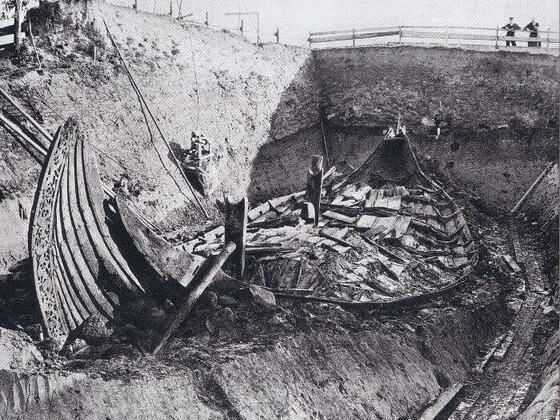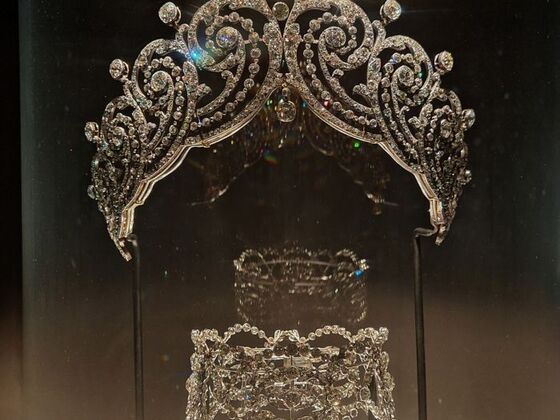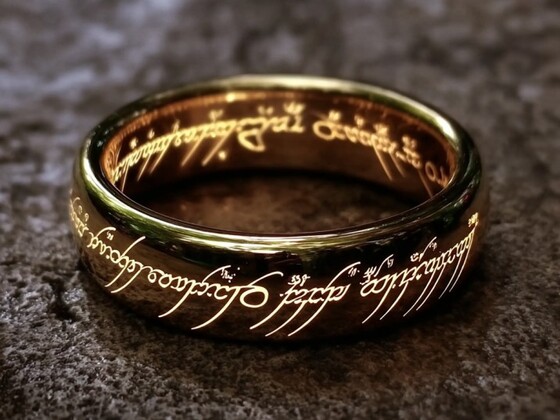If you’ve ever found yourself captivated by the glittering drama of royal jewels or the whispered legends that surround them, you’re in for a treat. Among the world’s most storied gemstones, the Black Prince’s Ruby stands out. Not for its exceptional brilliance or flawless cut, but for its fascinating past and the legendary curse that has intrigued gem-lovers and historians alike. I can tell you: the history of the Black Prince’s Ruby is a tale where fact dances closely with myth, and both leave a lasting mark.
Origin and Historical Background of the Black Prince’s Ruby
Let’s set the scene: the Black Prince’s Ruby is not, in fact, a ruby at all. This dazzling red stone is a spinel, a mineral long mistaken for ruby due to its fiery colour. In the Middle Ages, gemological science hadn’t yet advanced enough to distinguish between these gems, thus contributing to its nickname as the “great imposter.” Meanwhile, the Black Prince’s Ruby’s documented journey begins with Abu Said, the last Sultan of Granada, whose fate would unwittingly lay the foundation for the stone’s legendary curse.
Placed at the crossroads of power struggles in 14th-century Spain, this striking gem quickly gained a reputation not only for its beauty but also for the violence and betrayal shadowing its path through history. The Sultan’s Curse, as it’s now often called, was set in motion during those turbulent years.
The Beginning of the Curse: The Murder of Sultan Abu Said
Now, let’s dig deeper into that initial tragedy. In 1362, the Sultan, Abu Said, met with King Pedro of Castile under the pretence of a diplomatic peace. However, treachery lay in wait. According to legend, Pedro murdered the Sultan during this meeting and seized the large red stone from his victim’s possessions. From the very beginning, the gem was marked by an act of unspeakable betrayal, leading many to believe that the Black Prince’s Ruby was touched by an enduring curse.
The Sultan’s Curse became an irresistible tale for later storytellers. After all, it’s not every day that a supposedly “blessed” royal jewel is literally taken from the hand of a murdered king.
The Curse in the Hands of European Royals
Next, the Black Prince’s Ruby embarked on a remarkable European journey. After the Sultan’s death, King Pedro weathered a storm of civil war and family betrayal. His own misfortunes after acquiring the ruby read like a warning bell, one that would echo throughout the centuries. In 1367, Pedro rewarded Edward of Woodstock, famously called the Black Prince, with the captivating red gem for aiding him in battle. Edward’s storied military prowess could not shield him, though, from ill-fate as he soon faced his own misfortunes. Sparking murmurs about the powers of the Sultan’s Curse.
Throughout the next several generations, the so-called “ruby” found itself moving among English monarchs, including the doomed Charles I and the ill-fated James II. Monarch after monarch encountered both triumphs and inexplicable setbacks with the gem in their grasp, each adding a new chapter to its legend.
Notable Events Highlighting the Curse
Let’s not overlook the high drama. Henry V famously wore the Black Prince’s Ruby during the legendary Battle of Agincourt in 1415. Securing not only victory for England but a place for the stone in the annals of royal lore. Rumours swirled that the ruby had protected Henry from harm, even after a blow to his crown on the battlefield. However, fate was far from kind. Henry died young, struck down not in battle, but by dysentery. The legend grew; a jewel so powerful, yet so unpredictable.
One twist even tells of a knight who, after finding and returning the lost gem, was imprisoned rather than rewarded. Such stories only deepened the aura of danger and ungratefulness surrounding the Black Prince’s Ruby.
The Black Prince’s Ruby Through Turbulent Monarchies
The centuries continued, bringing more drama and more evidence, at least in popular imagination, that the curse had staying power. During the English Civil War, Cromwell’s government destroyed the crown jewels, but remarkably, the Black Prince’s Ruby survived. Its flight through revolution, restoration, and more than one royal exile (notably James II’s precipitous fall) links the stone to moments of extraordinary upheaval in British history. Each era seemed to add a fresh twist: the Imperial State Crown was reforged and the ruby set in a new setting, yet tales of bad luck persisted.
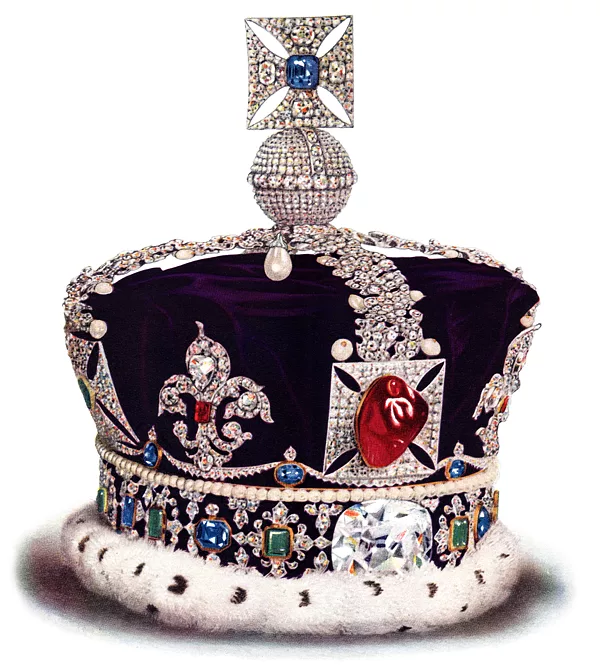
Modern Reception and Legacy of the Curse
Today, you can view the Black Prince’s Ruby on display in the Tower of London, gleaming at the centre of the Imperial State Crown. While modern gemologists can tell you it’s a spinel (and not a haunted ruby), that hasn’t dimmed its legendary reputation one bit. In fact, the ruby’s story fits seamlessly into the wider fascination with cursed gemstones. And the Black Prince’s Ruby is among the most infamous cursed gems entwined with the history and legends of royalty.
From TV specials about haunted artefacts to scholarly debates on the power of myth, the curse of the Black Prince’s Ruby remains a staple of storytelling, inspiring awe and curiosity in equal measure.
Conclusion
So, why does the tale of the Black Prince’s Ruby captivate us even now, centuries after it entered history? Perhaps it’s because the line between historical fact and sensational legend is beautifully blurred. Whether you believe in the curse or view it as poetic embellishment, there’s no denying that the Black Prince’s Ruby is more than just a gemstone. It’s a dazzling intersection of real events and enduring myth.
If stories of legendary cursed gemstones spark your interest, keep digging! You’ll find that history, legend, and a little mystery always make for the best-told tales.
Frequently Asked Questions (FAQ)
The gemstone is named after Edward of Woodstock, known as the Black Prince. Who received it from King Pedro of Castile in 1367 as a reward for military aid.
While there is no scientific evidence of a curse. Tales of misfortune, betrayal, and violence have surrounded the gem since it was seized during the murder of Sultan Abu Said. Over the centuries, these stories have evolved into a compelling legend of a royal curse.
Despite wars, fires, revolutions, and even the destruction of most other royal jewels during Cromwell’s rule, the Black Prince’s Ruby survived and was restored to the British Crown Jewels, further fueling its legendary status.
The Black Prince’s Ruby is an irregular cabochon spinel weighing approximately 170 carats, making it one of the most impressive gemstones in the British Crown Jewels.
Yes, legendary gemstones like the Hope Diamond and the Koh-i-Noor Diamond are also famed for supposed curses. These tales often intertwine historical events with myth, enhancing their allure and mystique.
Ready to Start Your Gemstone Journey?
Don’t wait to discover the world of gemstones! Explore these essential reads right away.
Fascinated by this article and want to deepen your gemstone expertise? Dive into our comprehensive Gemstone Encyclopedia. Here, you’ll discover detailed information about hundreds of precious and semi-precious stones, including their properties and values.
For those interested in the rich cultural significance and fascinating stories behind these treasures, our History section offers captivating insights into how gemstones have shaped civilisations. Or perhaps you’d like to learn more about birthstones?
And if you’re considering gemstones as more than just beautiful adornments, visit our Precious Metal Investing guide. Here you will learn how these natural wonders can become valuable additions to your investment portfolio.
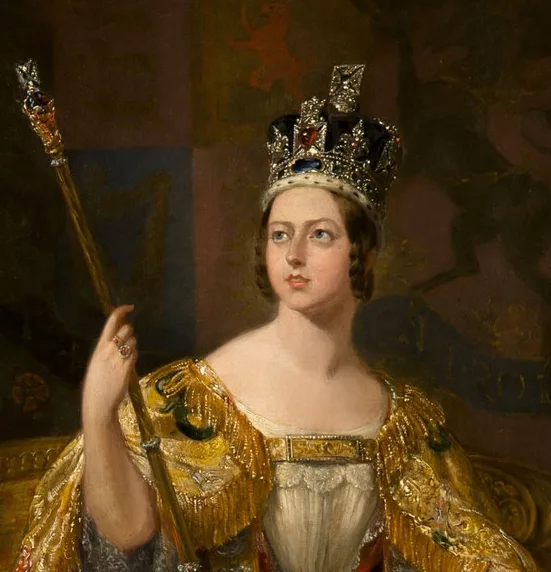
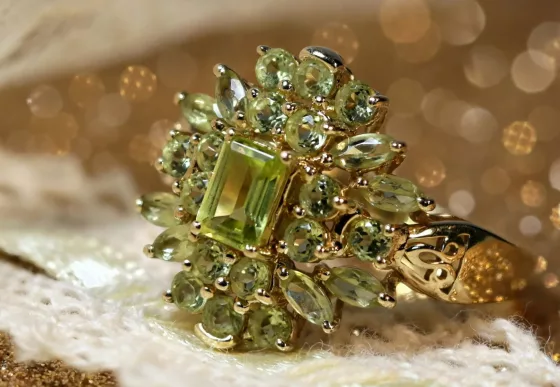
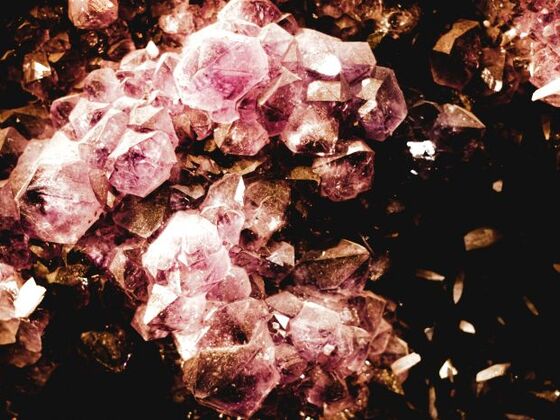
![Pigment analysis of Raphael's masterpiece[7][8] reveals the usual pigments of the renaissance period such as malachite mixed with orpiment in the green drapery on top of the painting, natural ultramarine mixed with lead white in the blue robe of Madonna and a mixture of lead-tin-yellow, vermilion and lead white in the yellow sleeve of St Barbara.](https://gemstonesinsider.com/wp-content/uploads/2025/09/Raphael-Madonna_Sistine_sm-560x420.jpg)
